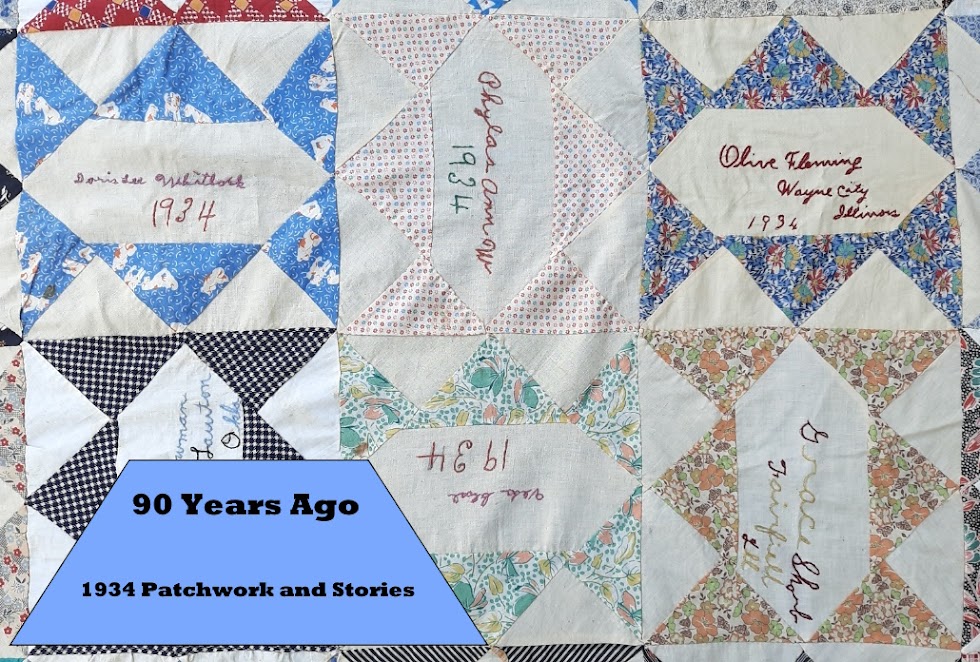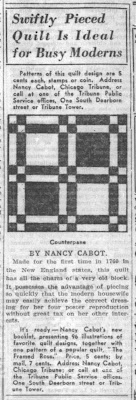The Pieced Bouquet pattern appeared in the New York Daily News on Monday, January 8th, 1934.
A late addition to quiltdom, this design is almost modern in character. It can be varied by using a different print in each block, giving the quilt the appearance of an old-fashioned garden. The border is made of strips of green and yellow.
Daily News New York, New York January 8, 1934
Here is the full page of the Daily News. There is a tiny article in the bottom left hand corner.
STITCHES QUILT OF 8,066 BLOCKS
Waynesburg, Ohio - The tireless fingers of Mrs. Elton Hoobler have just completed a quilt of 8,006 tiny hexagonal blocks, whose millions of stitches required nine months to complete.
This amazing quilt story went viral in 1934. The longer form of the press release provides a bit more information.
Believing her quilted record unique, Mrs. Hoobler says that the tedious piece of needlework required 800 yards of thread for "piecing" and 1,200 yards for "quilting." Each of the 8,066 blocks is one inch square. Two hundred eighteen different colored blocks, no two alike, are represented.
Mrs. Hoobler's record did not last long. Quilts of many, many tiny pieces continued to outdo the previous champions. In 'The American Quilt: A History of Cloth and Comfort', if states that the most plausible explanation for these painstaking constructions is that they were done in a spirit of competitiveness.
To view the work of a champion, visit this post on Albert Small's quilts.

.jpg)
.jpg)










